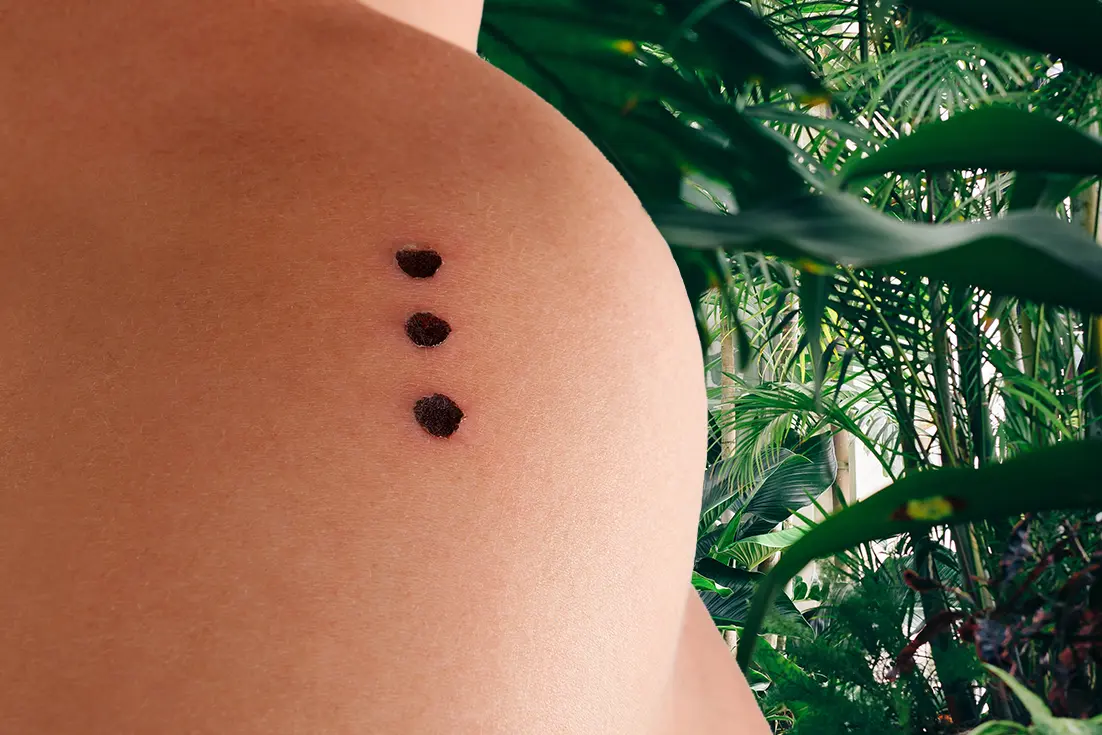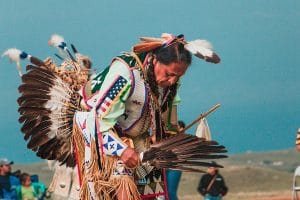A recent lawsuit filed against Soul Quest Church—known to host plant medicine ceremonies in Orange County, Florida—has brought questions of harm reduction to the fore.
In 2018, 22-year-old Brandon Begley passed away after doubling up on ayahuasca and kambo ceremonies, during which his reaction—not to the medicine, but to an overconsumption of water—exceeded the typical purge associated with both types of ceremonies. Now Begley’s family is suing the church on account of wrongful death.
The case brings to light a number of questions regarding best practices in ceremony and in vetting medicine practitioners beforehand. To better understand what happened, we spoke to S, a California-based facilitator who’s been administering kambo for the past six years and has served thousands of people in ceremony. Having been trained under a jungle practitioner, in association with a well-recognized, legitimate international kambo organization, S has asked that we keep his identity anonymous given the sensitive nature of this topic.
“To make things the most clear, kambo didn’t kill this person, nor did ayahuasca,” says S. “Overconsumption of water killed this person.”
It’s recommended to drink two liters of water within 20 minutes of receiving the kambo, he explains. However, everybody’s body is different, and not everyone can hold two liters of water in such a short amount of time. Some people, for instance, can only get a liter and a half down, he says, and that’s okay. “I do not allow my clients to drink additional water till after they have purged,” he explains—in order to avoid hyponatremia, the condition that killed Begley.
Read: The Ayahuasca Privilege
Caused by excessive water intake, hyponatremia is defined by a low sodium concentration in the blood. “It is extremely avoidable,” says S, who offers clients electrolyte powder and high quality salt to restore balance post-ceremony. “We do not need to over consume water. By all means, you can drink enough water to satiate your thirst, but do not overhydrate in the hours leading up to a kambo ceremony, nor come to ceremony having already drank the two liters of water.”
Moreover, S adds, there is little reason for someone to consume kambo in tandem with ayahuasca—as Begley had done. “I don’t recommend that,” he says, noting the “young, western, machismo approach of stacking medicines.” Kambo could be useful to take a few days in advance of ayahuasca for “pre-cleaning” so that you can “go deeper right away,” he says, but it’s not a good idea to take it the day of, and definitely not after. “Part of that is because a lot of dietas ask for no salt to be consumed, so the sodium levels in the body are already low if they’ve been on a traditional dieta,” S says.
The most important part of the conversation, however, is vetting the facilitator, whether you’re called to kambo, ayahuasca, 5-MeO-DMT, MDMA, or anything else. “There are a lot of contraindications, and a lot of nuance, skill, and knowledge that go into this,” says S. “People need to ask the right questions of their practitioners and their practitioners have a responsibility to make people aware of the risk and to screen every single client who comes through the door.”
How to Grow Shrooms Bundle
Take Both of Our Courses and Save $90!
Read: Why a Drug Testing Kit for MDMA or LSD Could Save Lives
To vet your practitioner, S recommends asking the following questions:
1. Who are your teachers? What school, lineage, or program did you train through? Did you apprentice under an experienced practitioner before beginning to serve?
2. How long have you been serving the medicine?
3. How often do you serve? How many ceremonies have you facilitated?
4. Have you ever had a health or safety incident in your practice? If so, please provide details.
5. Where do you get your kambo from? Can you ensure that it is ethically sourced and that no frogs are harmed in the collection of your kambo?
6. Do you donate to organizations that support the Amazon and/or the indigenous tribes who work with kambo?
7. Are you CPR and first aid certified?
8. How do you sterilize your tools between servings?
9. Do you offer a health intake screening clients for contraindications? How do you determine if it is safe for your clients to receive kambo?
10. Do you offer a test point for first time recipients? (As in, a microdose of the medicine before a full dose and is, as S describes, “absolutely essential” for clients who are new to kambo.)
11. How do you determine point placement and number of points? (That concerns the dosage of the medicine.)
12. How do you mitigate any potential risk of hyponatremia?
13. If the ceremony is group rather than a private session, how many people will attend?
14. Do you have qualified assistants to help you in a group session?
15. How many bathrooms are in the ceremony space and how far away are they? Will you or one of your assistants walk me to the bathroom during my process?
16. Do you offer integration support? If not, can you refer me to qualified integration support specialists or groups?
17. Can you provide testimonials and references from your clients?
18. Do you sing and/or play instruments during the ceremony?
19. If I get scared or panicky during the process, how will you support me?
20. How do you deal with difficult or stuck purges?
This handful of questions could be vital in saving lives, and ensuring harm reduction in the ceremony space. We can’t say for sure that Begley asked the church all, or any of the above questions, but in his memory, we can practice better safety standards.

DoubleBlind is a trusted resource for news, evidence-based education, and reporting on psychedelics. We work with leading medical professionals, scientific researchers, journalists, mycologists, indigenous stewards, and cultural pioneers. Read about our editorial policy and fact-checking process here.

DoubleBlind Magazine does not encourage or condone any illegal activities, including but not limited to the use of illegal substances. We do not provide mental health, clinical, or medical services. We are not a substitute for medical, psychological, or psychiatric diagnosis, treatment, or advice. If you are in a crisis or if you or any other person may be in danger or experiencing a mental health emergency, immediately call 911 or your local emergency resources. If you are considering suicide, please call 988 to connect with the National Suicide Prevention Lifeline.



